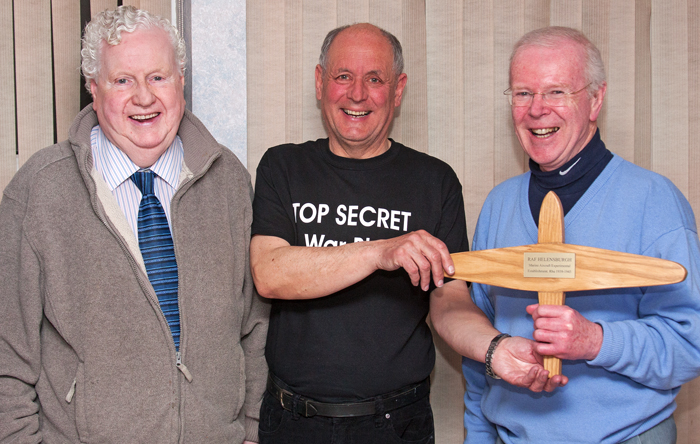THE dramatic story of the top secret Marine Aircraft Experimental Establishment in Helensburgh and Rhu in World War Two and why it came to Garelochside was revealed at Helensburgh Heritage Trust’s final open meeting of the 2012-13 winter season on March 27.
Author Robin Bird, who has published one book about the establishment and written a second, travelled from his Merseyside home and told an enthralled full house about what was officially known as RAF Helensburgh, showing a number of images never before seen in public.
Before the war MAEE, which worked primarily on seaplanes and flying boats, was based at Felixstowe where it would have been an obvious target for the Luftwaffe, so it had to move.
Its commanding officer was a keen yachtsman who had visited the then Royal Northern and Clyde Yacht Club at Rhu, and he recommended the area as meeting the establishment’s needs.
The Government of the day approved his idea, and the 350-strong MAEE workforce moved into the yacht club, the adjoining Rosslea, and Rhu Hangars, living in digs in the village and the burgh.
Robin, whose father Bob served as the MAEE photographer, said that they worked closely with the Blackburn Aircraft Factory in Dumbarton, and later in the war set up the Admiralty Hydro Ballistic Research Establishment in Glen Fruin — its water testing facility being the largest in Europe.
He recounted many of the incidents described in articles in the Military section of this website, including when Norwegians flew a German Heinkel aircraft to Rhu.
In the audience at Helensburgh Tennis Club was ex-Provost Billy Petrie, who as a schoolboy in Rhu saw the aircraft fly overhead, and later had the opportunity to board the aircraft.
From 1940 a priority was finding and sinking German submarines which were winning the Battle of the Atlantic, and MAEE tested and developed depth charges and other means of locating and destroying the U-boats.
By 1943, thanks to their research, the battle was won, and its 70th anniversary will be celebrated next month.
Some 30 MAEE staff were killed when experimental aircraft crashed — one of them on the hillside above Faslane, and they were officially described as losing their lives in ‘flying accidents’.
After the war MAEE returned to Felixstowe, and it finally closed in the 1950s as flying boats were no longer needed.
Robin, a retired weekly newspaper editor, said that readers of the Eye on Millig column in the Advertiser and the Heritage Trust website had contacted him and added greatly to his knowledge about MAEE’s people and events, and had provided many photos, so much so that he now has almost enough material to write a third book.
“I have always been concerned that there is nothing here in this area to say what happened to the people of MAEE,” he said, “and when I first came to Helensburgh I was astonished to discover how few people even knew of its existence.
“There was no Old Comrades Association or similar body to keep memories alive, and no memorials to those who died.”
He had a memorial cross made in the shape of a Sunderland flying boat, and he presented it to Trust chairman Stewart Noble at the end of the meeting. It will be displayed in the Heritage Centre in Helensburgh Library in West King Street.
Both Robin and the Heritage Trust are campaigning for a permanent outdoor memorial, perhaps a cairn, and the favoured site is Kidston Park, overlooking the loch where the flying boats landed and took off.





